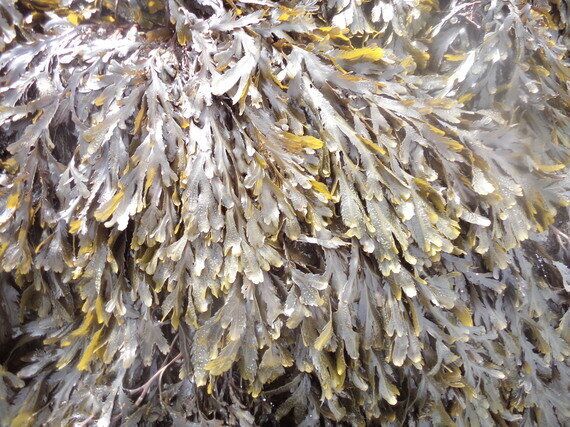In an eighteenth century dissertation on, The use of sea water in the diseases of the glands, Dr Richard Russell declared: 'One must drink sea water, bathe in it, and eat all manner of marine life in which its virtue is concentrated.' It was Russell's promotion of seawater that encouraged people to bathe in the icy waters of Great Britain. Drinking seawater waned in popularity towards the end of the nineteenth century and the focus shifted to the romantic and curing properties associated with the sea and taking the 'sea air'. By the early twentieth century the use of seaweed in baths had become became widespread.There were over three hundred seaweed baths along the Irish coastline and it was a much sought after recreation for newlyweds and those seeking romantic revival. Voya Seaweed Baths in Co Sligo is still a world renowned spa. Closer to home I was delighted to discover that Ishga (Gaelic for water) provide seaweed baths and treatments in Glasgow.

Historically, healing powers have been attributed to the wrack seaweed family or Fucales. In particular to serrated wrack Fucus serratus.There is tradition of elderly ladies soaking weary joints in bowls of wrack and seawater and of younger folk using it to exfoliate dead skin. Serrated wrack is the preferred seaweed species of many spas. Seaweed is a natural antiseptic but some say that its iodine content aids relaxation. This is not without global tradition. In New Zealand The Māori use seaweed for cuts and wounds and in the UK, Sorbsan, an alginate dressing, is used to dress leg ulcers.Seaweed is also thought to help those with skin complaints.
Toothpaste, many shampoos and beauty lotions contain carrageen (which has various E numbers) for its stabilising properties, but seaweed is also a concentrated source of minerals and trace elements. Seaweed used in UK beauty products is often imported, which makes it refreshing to hear that Ishga and Seaweed Organics use British seaweed in their products. The history of Creme de la Mer made by Estee Lauder, lies in a laboratory accident. Dr Max Huber, a NASA aerospace physicist suffered chemical burns to his face whilst experimenting. No treatment was beneficial and then, after years of trials, Huber developed a 'broth' made from the brown seaweed kelp. Amazingly it healed his scars. After Huber's death in 1995, Estee Lauder bought his business, Crème de la Mer. The kelp range is said to hide blemishes and is even good for nappy rash. Crème de Mer is on the beauty list of many celebrities but I was keen to try some products, which used Scottish seaweed.
The purple packaging of Ishga reminds me of August heather on Beinn Mhor, my local Hebridean hill. It's chic.The Hebridean Marine toner soothed my sun-kissed skin after some rare Hebridean sun. Ishga products are packed with serrated wrack and ooze scented seaside memories. The rejuvenating marine cream certainly put me in mood for bed and ocean dreamland. Seaweed Organics also produce an excellent range of seaweed products.
Children who live by the sea bath can collect seaweed at low tide and enjoy an excited bath-time. Seaweed will naturally colour warm bathwater green or brown depending on the species gathered. Popping the air bubbles on bladder or knotted wrack is much more fun then popping bubble wrap. One word of advice, remove the seaweed before pulling the bath plug because seaweed clogs up drains, and a plumber's visit might be more expensive than a visit to the spa.